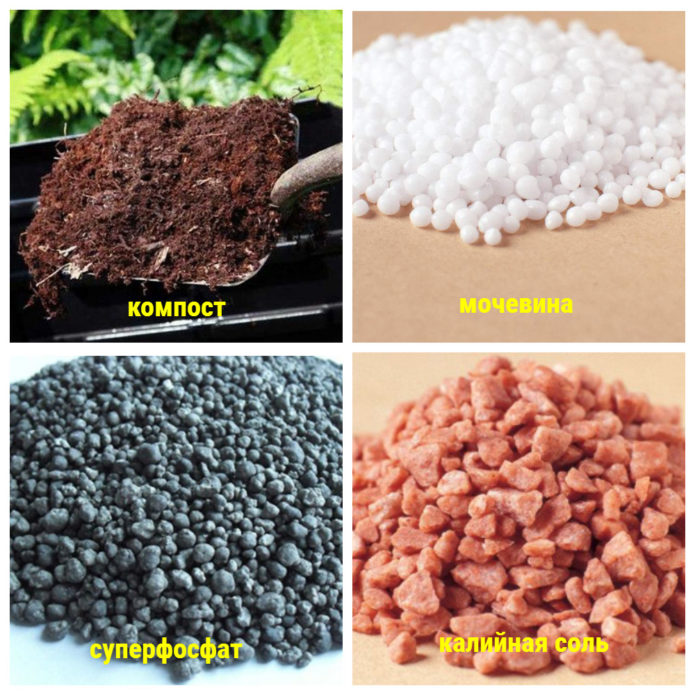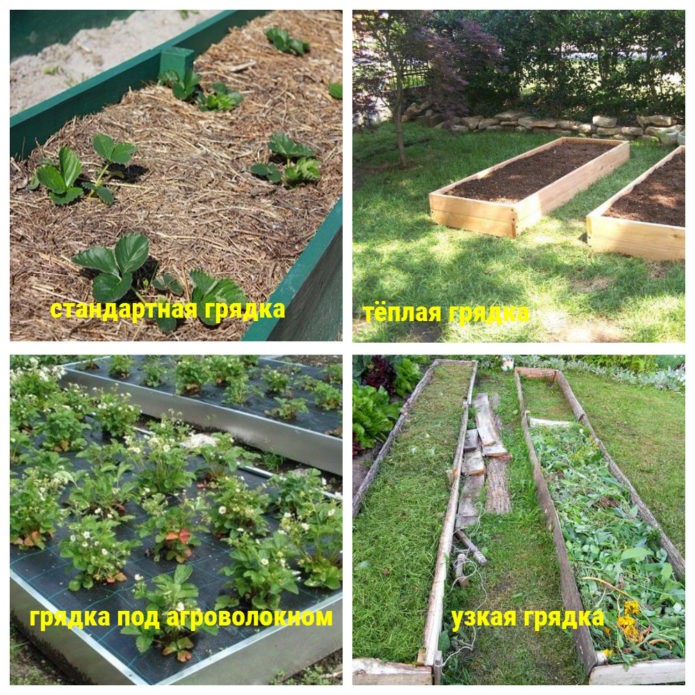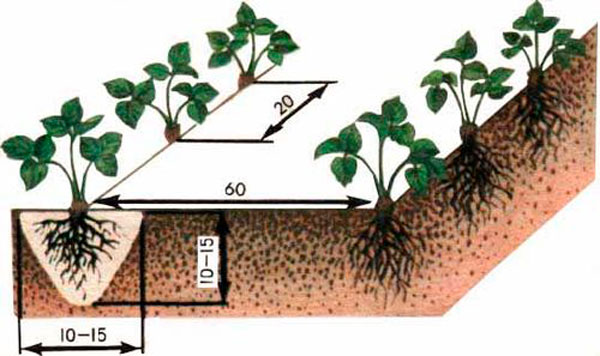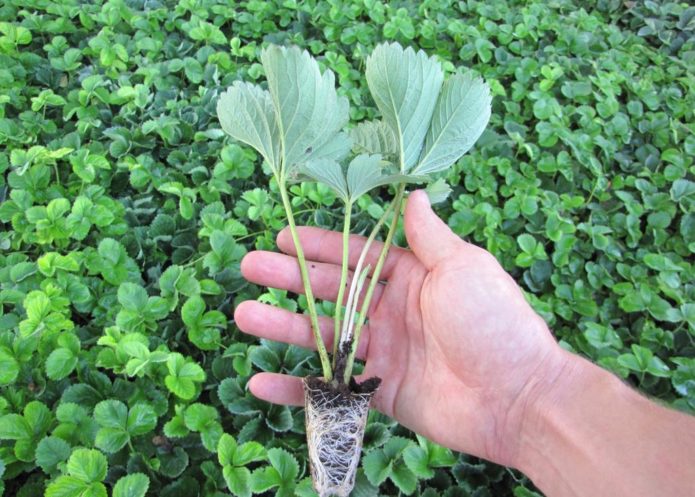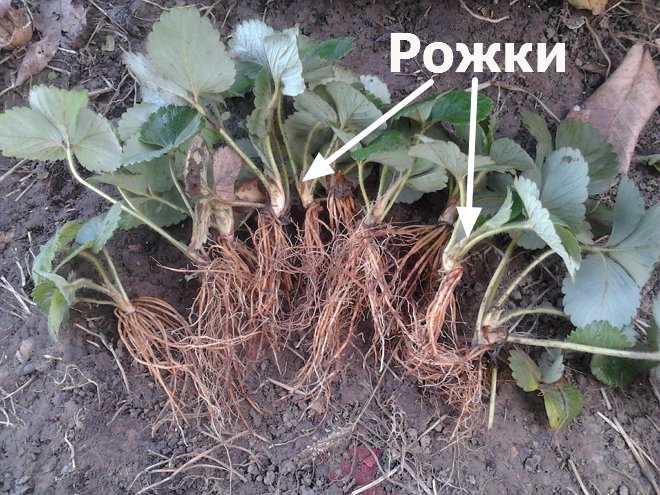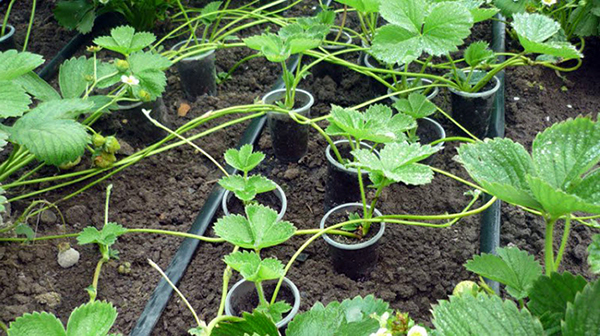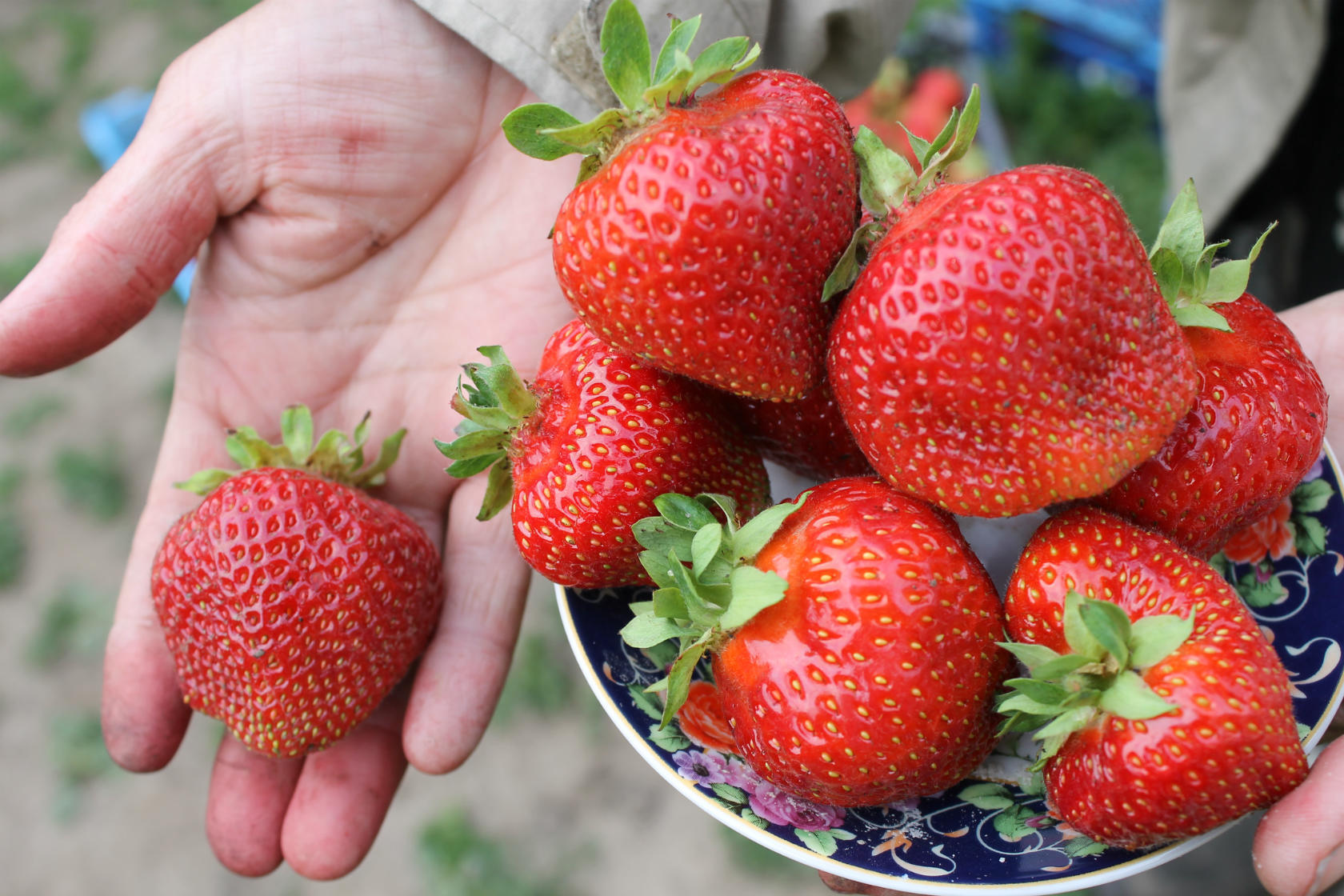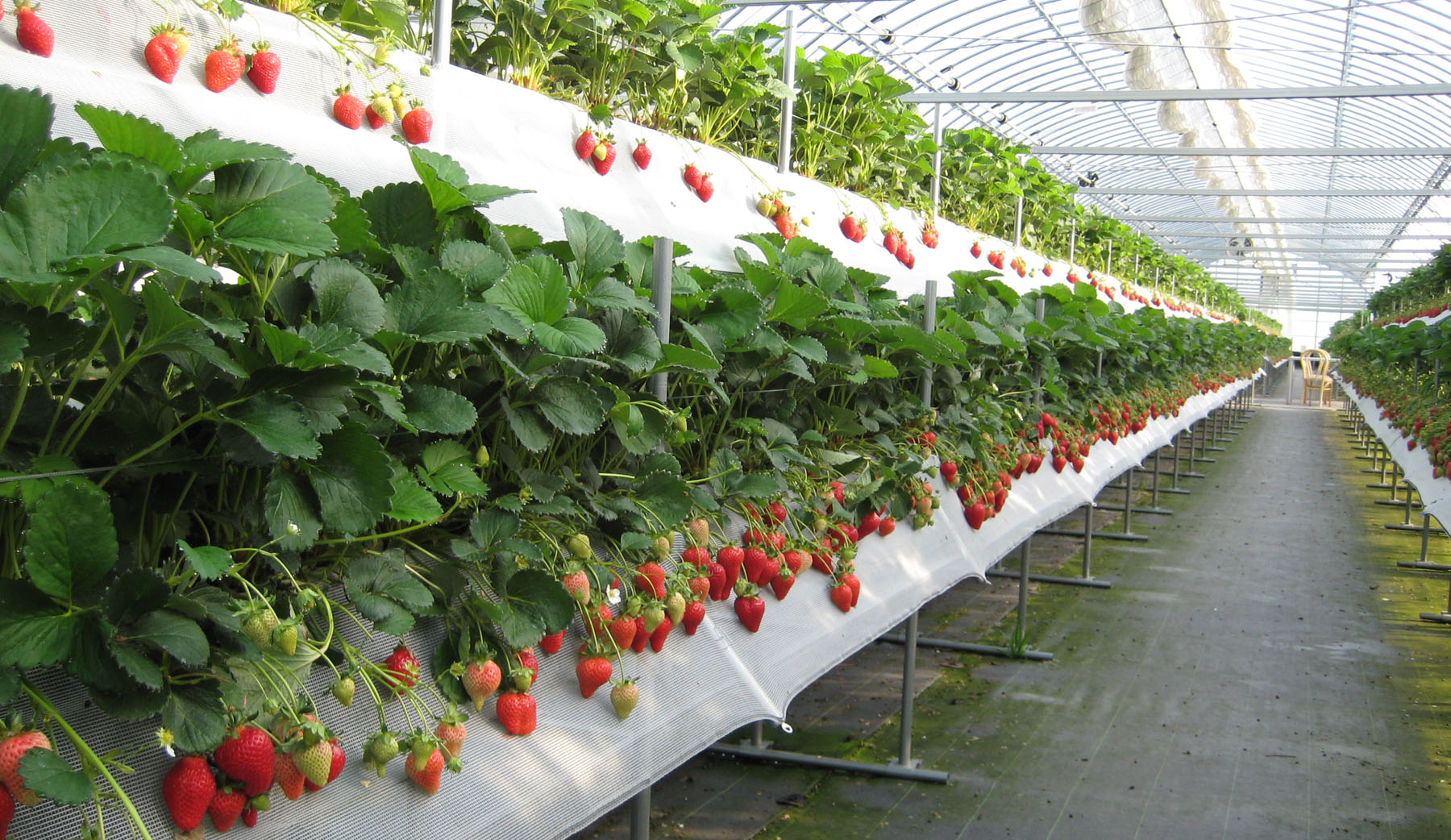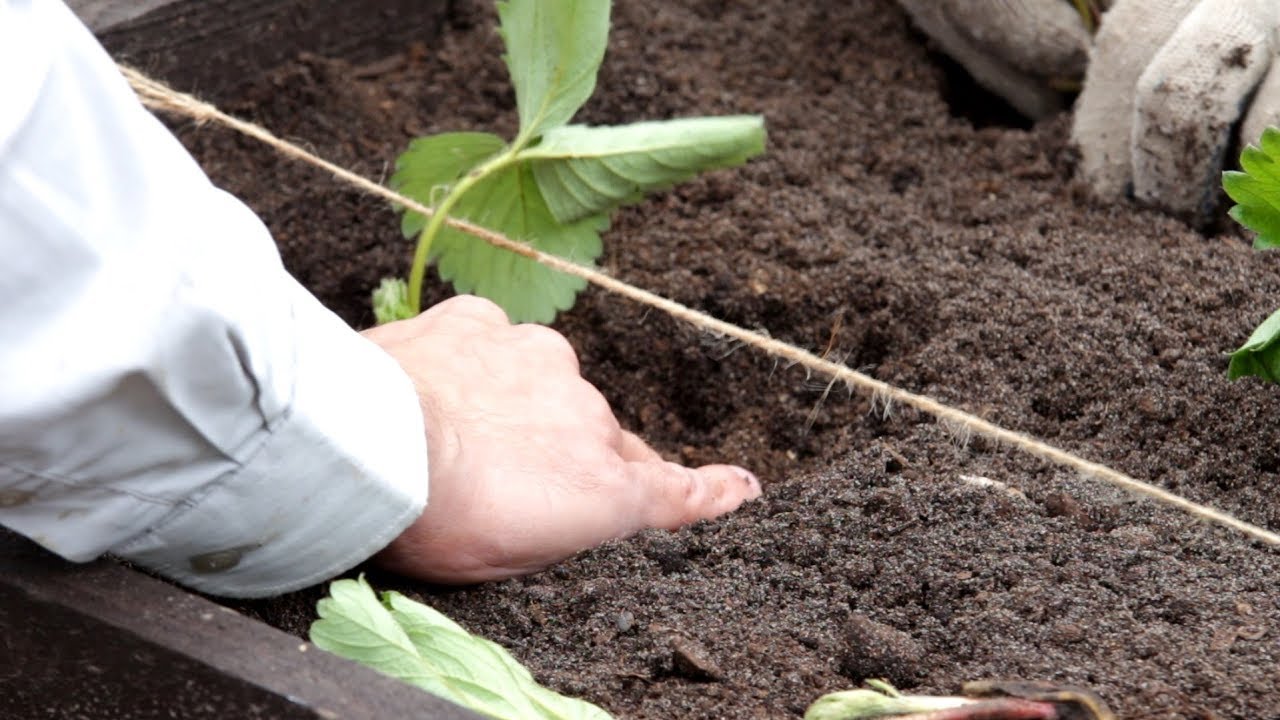Strawberries are a popular berry that can be found in any garden area, and many gardeners prefer to plant them in the spring. As you know, proper planting affects the further development and health of the plant, and strawberries are no exception. Like any other culture, it has its own characteristics regarding the preparation of planting material and places that you need to familiarize yourself with in order to successfully complete all the work and get the desired result.
Content
Preparing strawberry beds: basic activities and useful tips
To provide the berry grower with the best conditions for growth, it is necessary to be able to correctly form the garden bed and prepare the soil.
Site preparation
For strawberries, areas with a good level of illumination and light (sandy or loamy) fertile soils are suitable. At the same time, the site should be neither excessively dry (it is difficult for strawberries to get water if it is deep in the soil), nor swampy, therefore the optimal location of groundwater is 1.5 m from the soil level. It would be nice to arrange the strawberry beds next to the gooseberries or currants - in this case, the berry will be protected from the wind.
Good precursors for strawberries are legumes, onions, garlic, carrots, beets, and green manure (rye, wasp). It is undesirable to plant strawberries where nightshades (tomatoes, peppers, eggplants), cucumbers, potatoes and cabbage used to grow.
It is advisable to prepare a bed for strawberries in the fall, or during the planting season. To improve the soil, add the following fertilizers to it for digging:
- organic matter (rotted manure, compost, humus) - 6-8 kg / m2;
- urea or ammonium nitrate - 20 g / m2;
- potassium salt - 10 g / m2;
- superphosphate - 10 g / m2.
If you are preparing the site in the spring, then start all work a month before planting so that the fertilizers can be absorbed.
Strawberries do not grow well on acidic soils, so 10-15 days before fertilizing, deacidify them by adding slaked lime (200-300 g / m2) or dolomite flour (350-400 g / m2).
Signs of acidic soil include an abundance of horsetails or moss, light bloom or rusty water in pits.
If you are preparing a site for hybrid varieties, then pour a loose nutrient layer on the prepared soil, consisting of equal amounts of turf, white sand, peat and humus, without digging. The thickness of the layer is 10 cm. For greater convenience, this work can be carried out after the formation of the bed, but do not forget in this case to make the side walls 30–35 cm high.
Types of beds for strawberries
Strawberries grow well in various types of beds and you can choose the one that suits you best.
Standard bed
- Dig up the site (if you applied fertilizer in the spring, it is advisable to do a shallow digging with a pitchfork).
- Form a bed 20-25 cm high, 1-1.2 m wide and the length you need. Loosen up.
- Reinforce the sides of the bed with planks or slate to keep it from eroding and spreading weeds.
Narrow bed
A feature of a narrow bed is its small width (50–70 cm) and wide row spacings (up to 80 cm), which greatly simplifies planting maintenance and harvesting. In addition, such a bed is made for repeated use, and you will not need to form it every year.
- Carefully remove the sod from the selected area (topsoil 3–5 cm thick).
- Dig up the soil with the fertilizers applied to it, forming a bed 25 cm high, and loosen it.
- Reinforce the side of the bed with planks or slate. The design must be reliable, since the bed is no longer dug up.
- Place the removed sod in the aisles and flatten.
To simplify planting maintenance, the beds can be covered with agrofibre. To do this, spread the cover on the garden bed, fix it on the sides (for example, with staples or bury the edges in the soil) and cut small (about 5 cm) holes in it, placing them according to the chosen pattern.
Warm bed
The advantage of such a bed is the rapid heating of the soil, so it is indispensable for early planting and for growing thermophilic crops, including strawberries.
- Remove the sod and set aside.
- Dig a trench 45 cm deep to the length you want.
- Add a layer of sand (10-15 cm).
- Fill the remaining space with large branches, and put sawdust, straw, etc. on them.
- Place the sod cover down.
- Pour warm water over the workpiece.
- Install a wooden box 30 cm high.
- Add a layer of rotted manure, sawdust, compost, etc. (15 cm).
- Fill the remaining space with garden soil or black soil mixed with compost in a ratio of 3: 1.
If you are preparing a site for hybrid varieties, then pour a loose nutrient layer on the excavated soil, consisting of equal amounts of turf, white sand, peat and humus, without digging. The thickness of the layer is 10 cm. For greater convenience, this work can be carried out after the formation of the beds, but do not forget in this case to increase the height of the side fortifications.
Strawberry planting patterns
- Single row. With this scheme, strawberry bushes are located at a distance of 50 cm from each other, due to which they receive a sufficient amount of nutrients. Perfect for narrow beds.
- Multi-row. Most popular planting method. Strawberry bushes are placed at a distance of 20 cm from each other, a distance of 45-60 cm is maintained between the rows. Suitable for standard beds.
- Carpet. Suitable for placing a large number of bushes. Planting care is simplified (you do not need to water, weed, mulch often), but the berries will become smaller... The bushes are planted in a multi-row pattern, and in the future the mustache with rosettes is not removed, due to which a continuous "carpet" is formed. For this method, it is advisable to make a bed with a width of at least 2 m.
- Nesting. One nest consists of 7 bushes. First, the central bush is planted, the rest are planted around it at a distance of 10 cm and at a distance of 8 cm from each other. Distance between nests - 30 cm, between rows - 40 cm.
Rules for the preparation of planting material and planting strawberries in the ground
As you know, you can plant strawberries in the spring in the following ways: seedlings or dividing the bush. Each method has its own characteristics that you need to know in order to do the job correctly and provide the plant with the best conditions for growth. But remember that in the first year of a planted plant, you need to cut off all the flower stalks so that the strawberry directs its forces to the formation of roots and takes root better in a new place.
Planting seedlings
As a general rule, strawberry seedlings can be planted from mid-April to early May, when the required air and soil temperature is finally established (+6aboutC - +10aboutC), but keep in mind that each region has its own recommended time frames. Seedlings should be of a deep dark green color, without yellowing, spots, etc., have at least 5 leaves. Experienced gardeners also recommend paying attention to the roots and root collar. The roots should have a healthy appearance, be free from defects (rot, swelling) and reach a length of 7-8 cm. If you have grown the seedlings yourself or purchased ready-made ones with the soil, then the roots, when you take the sprout out of the container, should protrude from the ground. The root collar (the place where the root passes into the stem) should be at least 0.6 cm in diameter.
For planting, it is better to choose a cloudy warm, but not hot day, or to carry out all the work in the late afternoon. The technology is as follows:
- In the prepared bed, make holes 10-15 cm deep in accordance with the chosen scheme. If you did not improve the soil, then add 1-2 handfuls of humus and 1/5 cup of ash to each hole.
- Moisten the wells with water heated in the sun (calculation of water per well - 0.5 l).
- Place the sprout gently into the hole and spread the roots. If you are planting seedlings with a lump of earth, then do not water the soil for several days so that it can be easily removed from the container along with the shoots. Seedlings are not removed from peat pots and peat tablets.
- Sprinkle the sprouts without deepening the growth point ("heart" in the middle of the shrub), and compact the soil so that the plant does not "fall out" of the soil.
- Mulch the bed with needles, sawdust or straw in a layer of 5 cm.
There is no consensus among gardeners whether it is worth shortening the roots of strawberries when planting. Most agree that it is necessary to shorten those roots that are 20 cm or more in length (it is recommended to leave 10 cm) and that are sick and broken - they must be cut to a healthy place.
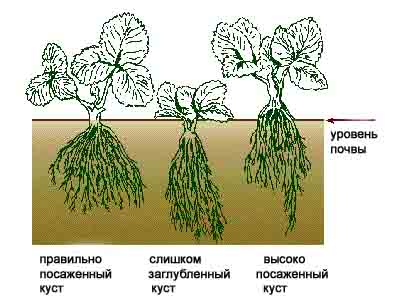
It is important not to deepen the strawberry bush when planting, so that the plant develops correctly
Spring planting of strawberries (video)
Planting horns
Horns are called single-leafed strawberry shoots that have grown from lateral roots. Most often they are used when there is a shortage of planting material or for reproduction of remontant strawberries that do not form a mustache, but this method is not widely used, since in this case it is necessary to dig out a bush. If you buy horns, try to choose ones dug out on the same day. It is desirable to take the horns from bushes 3-4 years old. The planting of the horns is carried out at the same time as the seedlings.
- Dig out the bush and clean the roots of the soil (you can put it in a basin of water).
- Carefully separate the horns from the main root. A good horn should have 3–7 leaflets, a living point of growth, lateral axillary buds and adventitious roots.
- Plant each horn in a well prepared according to the general rules and compact the soil.
- Mulch plantings according to the usual rules.
Mustache preparation
As a rule, strawberries begin to form a mustache at the end of flowering - this period falls in mid-late May or early June, depending on the variety and climatic conditions, so in the spring it will not work to propagate this berry using rosettes. But at this time you may well start preparing the planting material - for this you will need ordinary plastic cups.
- Choose the bushes that are the most productive.
- When the plant has a mustache with rosettes, place the rosette closest to the bush in a glass filled with soil (you can take it from the garden) and secure with a piece of wire.
- Remove any other mustache from the bush. If a mustache appears on the selected outlet, also remove it immediately.
- When the rosette takes root and grows (this will be indicated by the appearance of new leaves), cut the mustache and transplant it to a new place prepared according to the usual rules.
Features of spring planting of strawberries in different regions
Although the technology for planting strawberries is common, each region has its own characteristics, familiarization with which will help you to carry out all the work at the most appropriate time and provide strawberries with good conditions for growth.
Regional features of planting strawberries (table)
| Region | Features: |
| South | Planting dates: early to mid-March. Recommended varieties: can be planted at any ripening period. Since there are often droughts in the south, it is recommended to plant strawberries not in the beds, but in holes dug right in the prepared flat ground, so that the roots can more easily get water. After planting, strawberries should be shaded for 5-6 days. |
| Middle lane | Planting dates: mid-late April. Recommended varieties: mid-season (Junia Smides, Vityaz, Krasavitsa Zagorya, Gigantella, etc.). |
| Ural | Planting dates: early-mid-May. Recommended varieties: early ripening (Ostara, Kokinskaya early, Ruslan, etc.) and mid-ripening (Festivalnaya is perfect). It is advisable to plant strawberries at a soil and air temperature of at least + 8 ° C. |
| Siberia | The recommendations are the same as for the Urals. In addition, try to use a warm bed or cover material (spandbond, agrotextile, etc.) for growing. |
As you can see, planting strawberries in the spring is not difficult, you just need to properly prepare the site and choose high-quality planting material. Follow all instructions and complete all work on time, and you will certainly get a healthy plant and provide yourself with a quality harvest.
